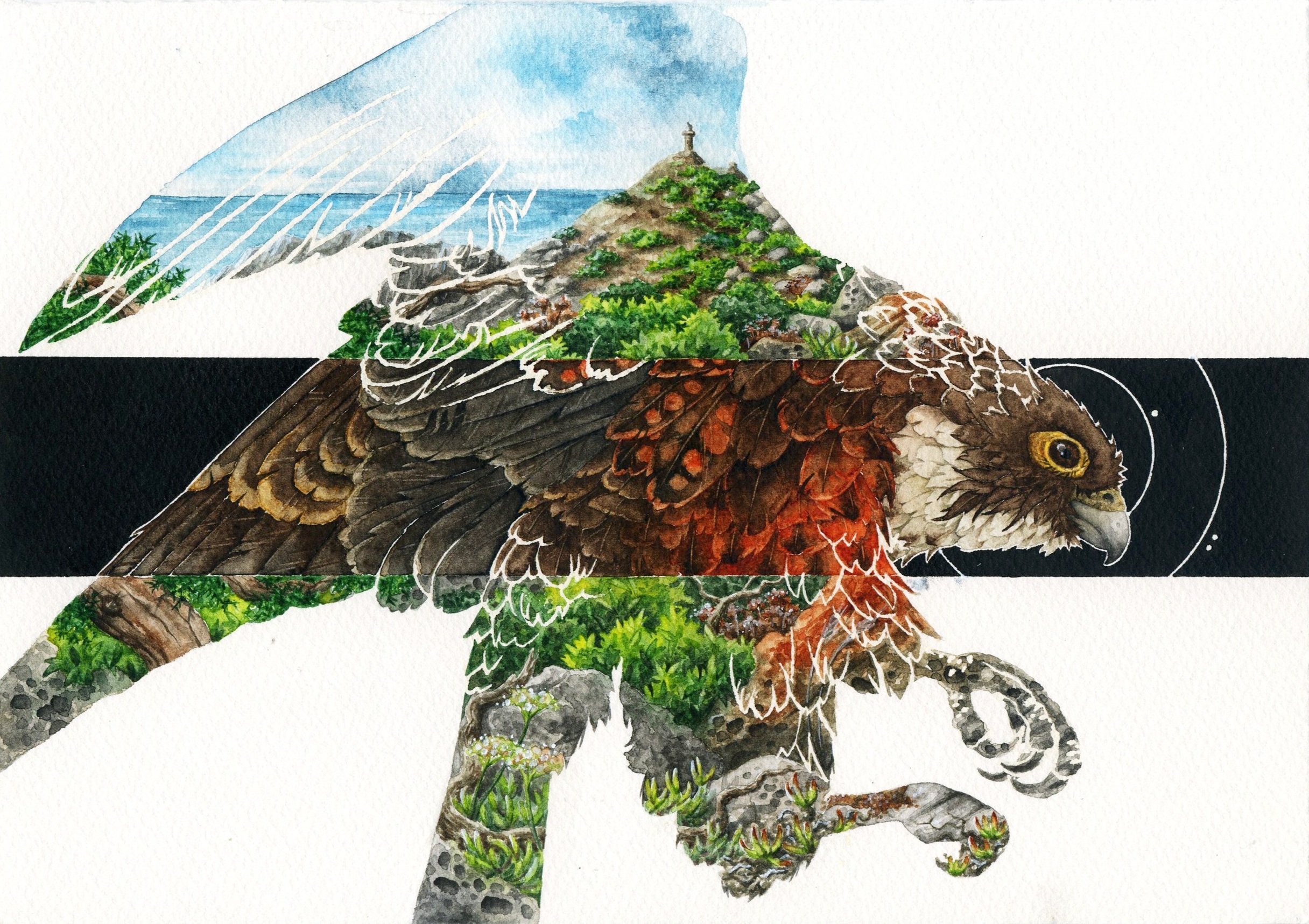THE VIEWS OF SAN PIETRO
by sileō
A journey inside a book of memories made of watercolor, instant photography, old queens and new adventurers. The main subject is Eleonora's Falcon, which nests on the Island of San Pietro, Sardinia.
Medium
Ink and watercolors, emulsion lifts of polaroid films, handmade paper.
Year
2021
Anthropocene. From the Greek anthropos, meaning man. With this term, around the 1980s, we began to define the current geological era, unequivocally linked to human action, as we can see from most of territorial, structural and climatic changes. Undoubtedly, there are many negative changes, just think of the rapid reduction in biodiversity, global warming, deforestation and countless other events, but for this one time, we thought it was right to show how man, the cause of so many problems, can also find solutions.
But first, let's start with the setting of this story. 2018. August. We fly to Sardinia in search of a nature that’s totally alien to what we know from our lived experience in northern Italy. We end up on the Island of San Pietro, in the south-west of the region. Unluckily accompanied by a universal deluge, in the brief respite of a sigle dry day we manage to observe such wealth of natural beauty to leave us breathless: from the flamingos just outside Carloforte, the jellyfish of Cala Fico, up to the protagonist of this artistic research.
While it’s true that in the pages of this book you can see many glimpses of plants, rocks and sea, the focal point is always one, even when you can't see it. Eleonora's falcon.In fact, on the Island of San Pietro there is a small gem that belongs to those who love to spend hours chasing an impression of feathers in the sky. If you let yourself be lulled by the surrounding environment, it is easy to lose track of time and spend a few hours observing the sea, the sky, the rocks, following the flight of Eleonora’s falcon.
It is to her that we owe this view, and this is where the Anthropocene comes into play. Just as man in the 1300s put the falcon’s survival at risk, man has also always guaranteed its safety, thanks to the intervention of Juighissa Eleonora and her law that prohibited the hunting of adult specimens and the taking of nestlings. This falcon owes its name and life to her. Now the area is a protected natural reserve and man continues to protect the environment and the animals that inhabit it, going there to admire the natural spectacle that is offered in exchange for just a little respect.
materials and techniques
To represent this progressive approach to Eleonora's Falcon, we used various techniques. The main medium is watercolor, which can be found in the landscapes, in the pages that recall ancient scientific illustrations, up to the close-ups of the animal, so tied to the environment where it lives that it is almost entirely composed of it in the final image.
In the scientific illustrations Silvia wanted to draw attention only to some details through the use of color, leaving the rest in black and white, creating the images with black ink pens.
The most particular technique, however, is the photographic one. All of Leonardo’s photographs were applied to the sheets through the method called Polaroid emulsion lift, in which the layer in which the image is exposed in a Polaroid instant photo is removed with the help of water from its support, thus obtaining a semi-transparent veil that can be applied to another support, in this case small pieces of paper, or a whole sheet, as in the case of the cover, on top of which we then created a watercolor image.
You can see the whole process in the following video.






























